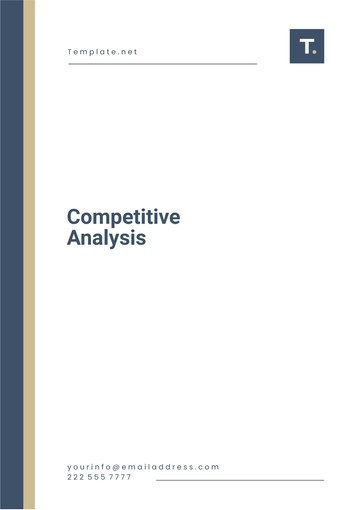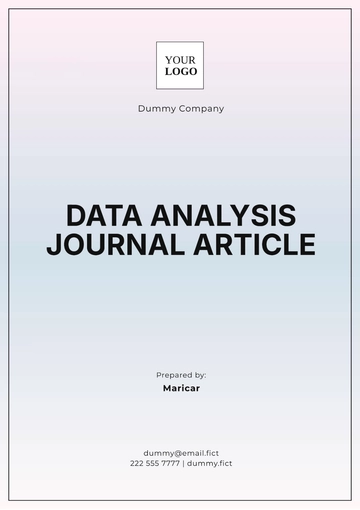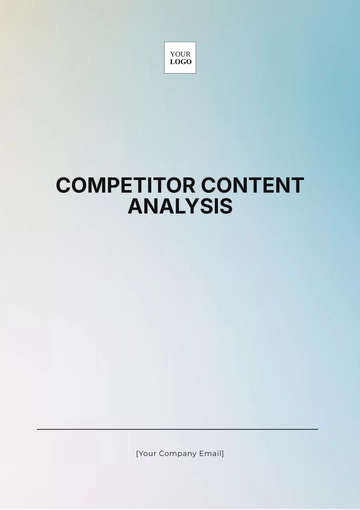Free Industry Growth Literary Analysis

Prepared By: [Your Name]
I. Introduction
The analysis of industry growth is a multifaceted examination that delves into the patterns, trends, and underlying factors contributing to the expansion or contraction of various sectors. By exploring both quantitative data and qualitative insights, this analysis provides a holistic understanding of how industries evolve. This paper examines key themes and dynamics that underpin industry growth, drawing from a diverse range of literature sources to offer a comprehensive perspective. [Your Company Name] has conducted this analysis to provide insights into the evolving industrial landscape.
II. Historical Perspectives on Industry Growth
A. Early Industrialization
The onset of industrialization marked a pivotal shift in global economic activities, propelled by groundbreaking technological advancements and transformative changes in labor practices. This period laid the foundation for modern industry, with several key sectors leading the charge:
Textile Industry: The invention of the spinning jenny, power loom, and other mechanized innovations revolutionized textile production, drastically increasing output and efficiency.
Iron Industry: Enhanced smelting processes, particularly the development of blast furnaces, significantly boosted iron production, which became a cornerstone for industrial machinery and infrastructure.
Coal Mining: As the primary fuel for steam engines and industrial machinery, coal mining expanded rapidly, powering the broader industrial revolution and facilitating further technological advancements.
B. Post-World War II Expansion
The post-World War II era heralded a period of unprecedented industrial growth and economic expansion, particularly in developed nations. This period was characterized by the emergence of new industries, significant technological advancements, and the globalization of markets:
Automotive Industry: The advent of mass production techniques, epitomized by assembly line manufacturing, coupled with rising consumer demand, drove exponential growth in the automotive sector.
Electronics Industry: The widespread adoption of household appliances, computers, and telecommunications technologies marked the beginning of the digital age, transforming everyday life and business operations.
Service Industry: Increased disposable income and urbanization spurred the growth of the service sector, leading to the proliferation of industries such as retail, finance, and hospitality.
III. Factors Influencing Industry Growth
A. Technological Advancements
Technological innovation is a driving force behind industry growth, often acting as a catalyst for the transformation of existing industries and the creation of entirely new sectors. The impact of technology can be observed in various dimensions:
Automation: The integration of automated systems increases efficiency, reduces labor costs, and enhances production capabilities, enabling industries to scale rapidly.
Information Technology: IT advancements improve communication, streamline data management, and enable businesses to operate more effectively in a globalized market.
Digitalization: The shift towards digital platforms and processes disrupts traditional business models, leading to the emergence of new industries such as e-commerce, fintech, and digital media.
Key Technology | Impact on Industry |
|---|---|
Automation | Increases efficiency and lowers production costs. |
Information Technology | Enhances communication and data management capabilities. |
Digitalization | Enables new business models and disrupts traditional practices. |
B. Economic Policies
Government policies play a crucial role in shaping industry growth by creating an environment conducive to business development. Policies that affect taxation, subsidies, trade agreements, and regulations can significantly impact industry trajectories:
Tax Incentives: Targeted tax breaks encourage investment in specific industries, fostering innovation and growth.
Subsidies: Financial support from the government can help emerging sectors overcome initial challenges and become competitive in the market.
Trade Agreements: By reducing barriers to entry and opening new markets, trade agreements facilitate industry expansion on a global scale.
Regulations: Proper regulatory frameworks ensure fair competition, protect consumer interests, and maintain industry standards, contributing to sustainable growth.
IV. Case Studies in Industry Growth
A. Technology Sector
The technology sector has experienced remarkable growth in recent decades, driven by relentless innovation, increasing consumer demand, and the globalization of markets. Major companies like Apple, Google, and Microsoft have become dominant players, shaping the global economy and influencing a wide range of industries:
R&D Investment: Continuous investment in research and development fuels technological advancements and keeps the sector at the forefront of innovation.
Consumer Adoption: The rapid uptake of new technologies by consumers drives demand and accelerates the growth of tech companies.
Globalization: The expansion into global markets allows tech companies to reach a broader audience and leverage economies of scale.
Network Effects: The interconnectedness of technology platforms amplifies their value, creating a positive feedback loop that accelerates growth.
B. Renewable Energy Sector
The renewable energy sector is witnessing rapid expansion as the world shifts towards sustainable alternatives to fossil fuels. Investments in solar, wind, and hydropower are increasing, driven by a combination of environmental concerns, technological innovations, and supportive government policies:
Environmental Legislation: Stringent environmental regulations and international agreements push industries towards adopting renewable energy solutions.
Technological Advancements: Innovations in renewable energy technologies have reduced costs and increased efficiency, making them more competitive with traditional energy sources.
Public Awareness: Growing awareness of climate change and environmental sustainability drives consumer and corporate demand for green energy.
Economic Viability: As renewable energy becomes more cost-effective, it attracts significant investment, further propelling its growth.
V. Conclusion
Industry growth is a dynamic and complex phenomenon, shaped by an interplay of historical trends, technological advancements, economic policies, and sector-specific factors. Through a literary analysis of these elements, [Your Company Name] provides valuable insights into the forces that drive the evolution of industries. As industries continue to adapt to changing conditions and new challenges, ongoing research and analysis will be essential for understanding and navigating the future landscape of global industry.
- 100% Customizable, free editor
- Access 1 Million+ Templates, photo’s & graphics
- Download or share as a template
- Click and replace photos, graphics, text, backgrounds
- Resize, crop, AI write & more
- Access advanced editor
Analyze the impact of industry growth on literature with Template.net's Industry Growth Literary Analysis Template. This customizable and editable tool guides you in exploring how industry developments are reflected in literary works. Editable in our AI Editor Tool, it offers a structured framework to assess the thematic and narrative responses to industry changes within the literature.





























